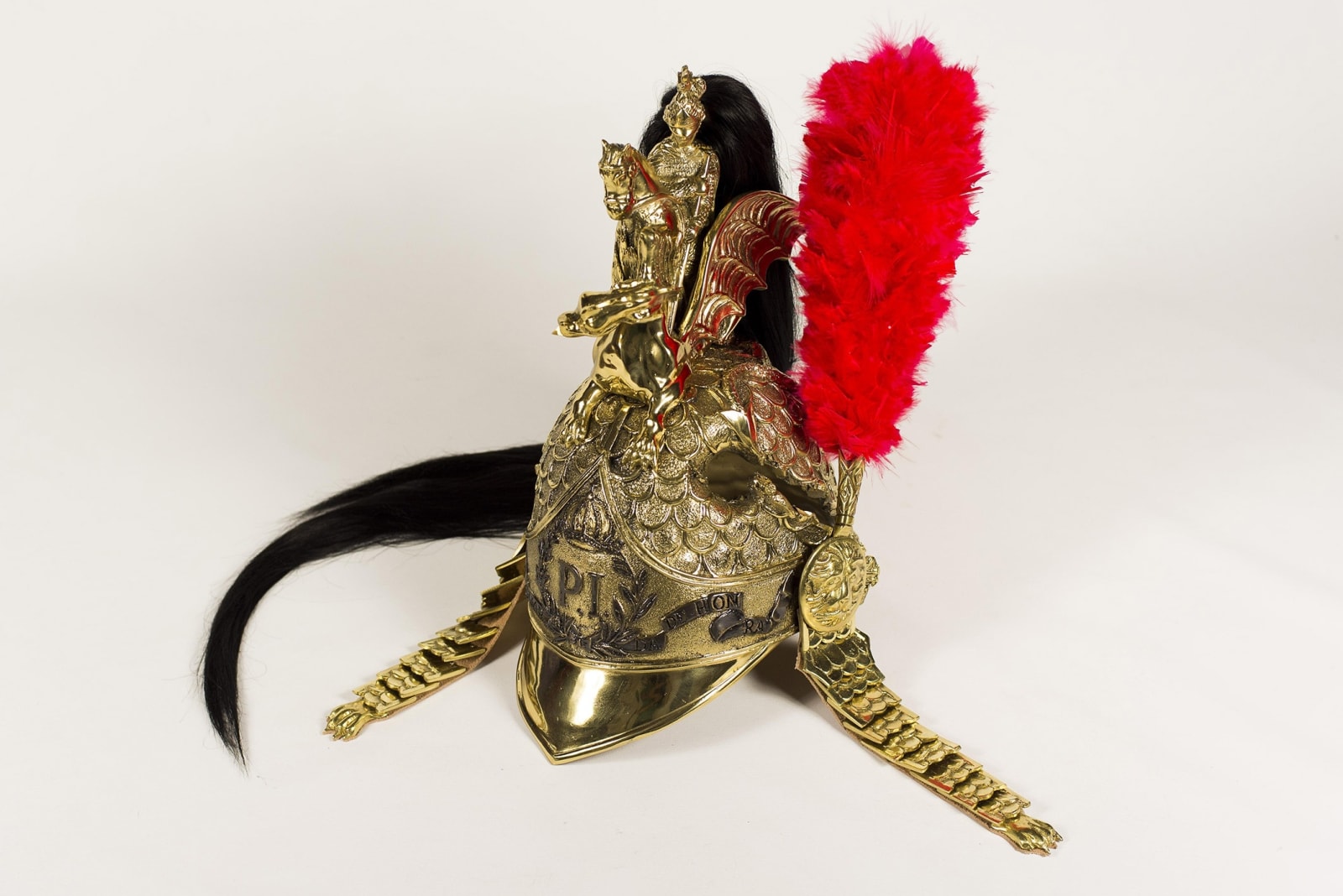
The Great Fight, 2019
bronze, leather, fiber and feather
43 x 30 x 22 cm
Ed. 3 + PA
It is a commentary on Brazil's independence, a replica of the imperial army helmet in which the dragon was the symbol of power. The helmet appears in the painting "Independence ou death", by Pedro Américo, and replicas of the helmet are still used today by the army cavalry that provides presidential security in the palaces of Brasília. The sculpture replaces the original dragon with the figure of São Jorge annihilating the dragon, the beast of colonial heritage, responsible for massacring the people. The dragon as a symbol of power presents us with a duality: the mythological symbol whose strength should protect the nation is also the beast that slaughters the people. Close to the celebrations of the bicentenary of Brazil's independence, the work questions the role of the State that would protect the population, but it is also the one who sometimes destroys it. Work is also an irony: the holy warrior, the patron saint of chivalry, the god of war and the protector of the people, this time destroys the symbol of power and chivalry. The helmet has piercing holes, as if it had been hit by the spear of the holy warrior. In the sculpture, it is possible to notice that the saint himself uses the replica of the helmet, as if it were possible to replicate to infinity the impasse between protection and annihilation
exhibitions
Bronze, Couro, Ouro, Sangue, 2021, Casa Triângulo, São Paulo, Brazil
It is a commentary on Brazil's independence, a replica of the imperial army helmet in which the dragon was the symbol of power. The helmet appears in the painting "Independence ou death", by Pedro Américo, and replicas of the helmet are still used today by the army cavalry that provides presidential security in the palaces of Brasília. The sculpture replaces the original dragon with the figure of São Jorge annihilating the dragon, the beast of colonial heritage, responsible for massacring the people. The dragon as a symbol of power presents us with a duality: the mythological symbol whose strength should protect the nation is also the beast that slaughters the people. Close to the celebrations of the bicentenary of Brazil's independence, the work questions the role of the State that would protect the population, but it is also the one who sometimes destroys it. Work is also an irony: the holy warrior, the patron saint of chivalry, the god of war and the protector of the people, this time destroys the symbol of power and chivalry. The helmet has piercing holes, as if it had been hit by the spear of the holy warrior. In the sculpture, it is possible to notice that the saint himself uses the replica of the helmet, as if it were possible to replicate to infinity the impasse between protection and annihilation